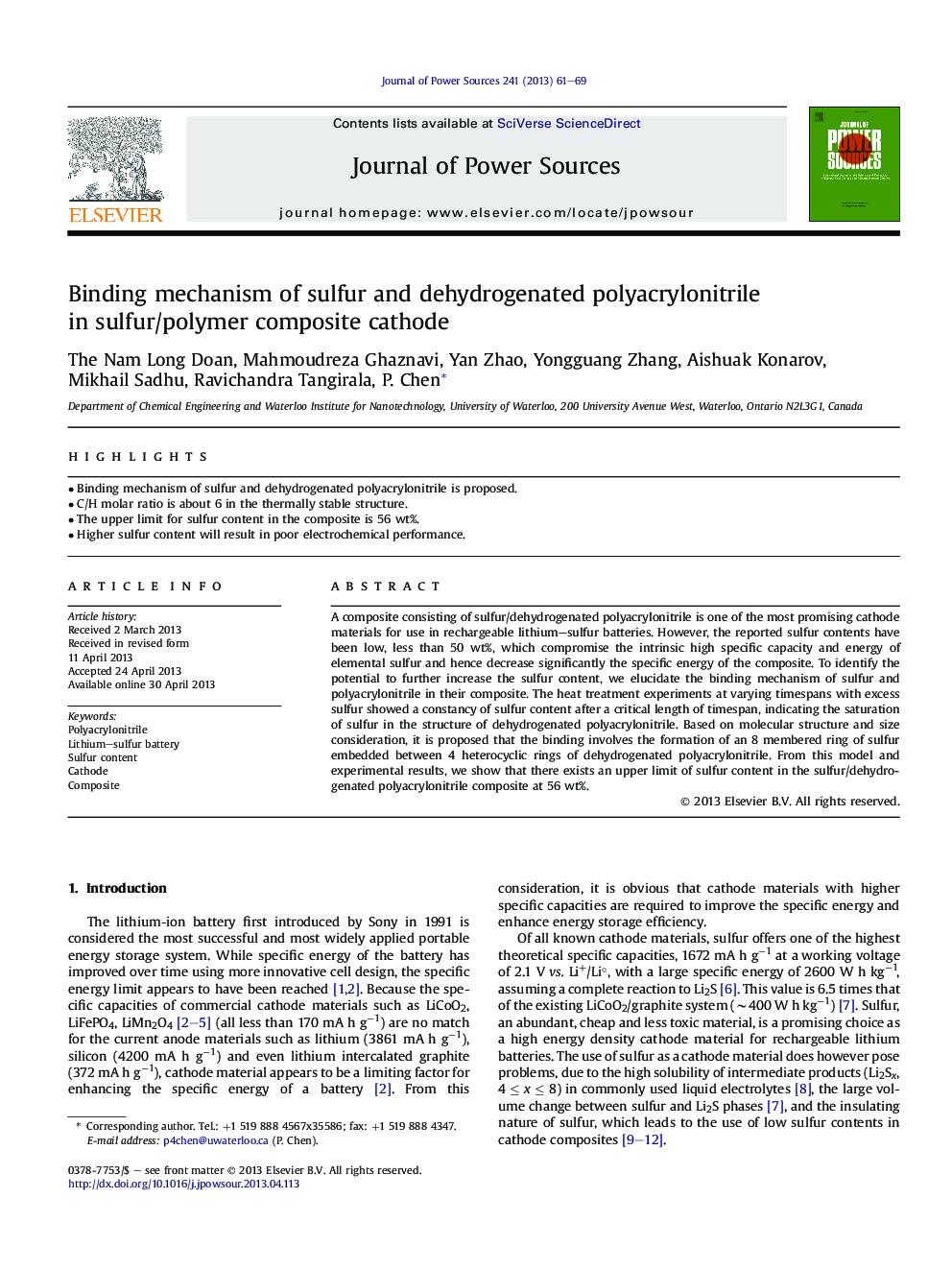| Article ID | Journal | Published Year | Pages | File Type |
|---|---|---|---|---|
| 7740204 | Journal of Power Sources | 2013 | 9 Pages |
Abstract
A composite consisting of sulfur/dehydrogenated polyacrylonitrile is one of the most promising cathode materials for use in rechargeable lithium-sulfur batteries. However, the reported sulfur contents have been low, less than 50Â wt%, which compromise the intrinsic high specific capacity and energy of elemental sulfur and hence decrease significantly the specific energy of the composite. To identify the potential to further increase the sulfur content, we elucidate the binding mechanism of sulfur and polyacrylonitrile in their composite. The heat treatment experiments at varying timespans with excess sulfur showed a constancy of sulfur content after a critical length of timespan, indicating the saturation of sulfur in the structure of dehydrogenated polyacrylonitrile. Based on molecular structure and size consideration, it is proposed that the binding involves the formation of an 8 membered ring of sulfur embedded between 4 heterocyclic rings of dehydrogenated polyacrylonitrile. From this model and experimental results, we show that there exists an upper limit of sulfur content in the sulfur/dehydrogenated polyacrylonitrile composite at 56Â wt%.
Related Topics
Physical Sciences and Engineering
Chemistry
Electrochemistry
Authors
The Nam Long Doan, Mahmoudreza Ghaznavi, Yan Zhao, Yongguang Zhang, Aishuak Konarov, Mikhail Sadhu, Ravichandra Tangirala, P. Chen,
